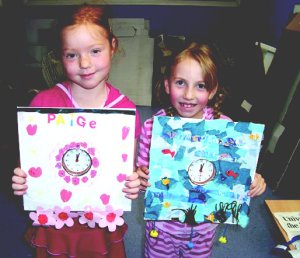Dealing with the press on a daily basis is a tricky business. Amber Stevens suggests using marketing techniques to sell a story.
Given that the media form a core link between our products and our consumers, maybe we should start making them a major part of the marketing mix. Applying the same data profiling to our local media channels as we apply to our consumers ? finding out what they want, how they respond, when is the best time to contact them and how we can meet their needs ? would be one way to better ensure that they meet our needs in return.
Arguably if a story doesn?t get news coverage that?s because it hasn?t been made newsworthy enough: a press release may present the core facts but does it tell the story? If not, it may only make it into the ?in brief? section. So how do we stop our worthy events and performances from ending up on the cutting room floor? Bearing the marketing mix in mind, when writing copy for the press, try applying the theory of market segmentation. You are firstly promoting your company to the media, who in turn are promoting to your consumers. This means thinking about what both groups need. Ultimately customers buy for their reasons, not ours, so what?s interesting to those of us actively involved in something is unlikely to motivate much customer response. And it therefore won?t be what the press need to sell papers. The media also need the public to associate them with discovering your product; they need to be credited with introducing them to something new and exciting.

Going with the ?people stop reading after 12 words rule?, firstly think about who you?re writing for. Technical terms and jargon only alienate the masses: a catchy press release should create a buzz within the first few words, enticing them to find out more. To see how your story fits in with what your local paper is working on, try approaching different reporters ? for example, if you?re running a children?s event or exhibition, approach the education reporter and see how this fits in with what they?re currently working on. It may be that you can provide them with a reader-friendly option.
If you?ve planned your press coverage to fit in strategically with your brand image, it?s necessary to co-ordinate press attendance to generate consumer attendance. The press can be encouraged to work with organisations. Careful explanation of where you are in your product lifecycle and the brand image you?re aiming to convey can help media outlets reflect you accurately. At Artlandish we?ve had to work hard to establish this level of understanding with our local media channels but it?s been reflected in our recent press coverage. People who ring us now are much clearer about what we offer and who we are, which is really important to an ever-growing social enterprise. A misquote in the press stops you communicating your product effectively to your consumer, and gives them a negative introduction to your brand. Follow-up communication is of great importance too, so when your coverage has been published, give the journalist a ring to thank them for helping to take forward a positive image of your company. If you?re the most professional company they deal with then that?s likely to be reflected in how they represent you.
Amber Stevens is Marketing
Co-ordinator at Artlandish Ltd, a community arts organisation in North East Lincolnshire.
t: 01472 267500.
e: amber@artlandish.vispa.com



